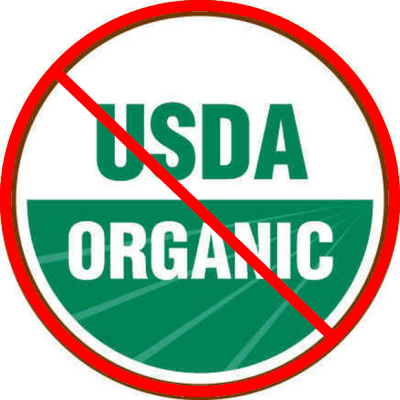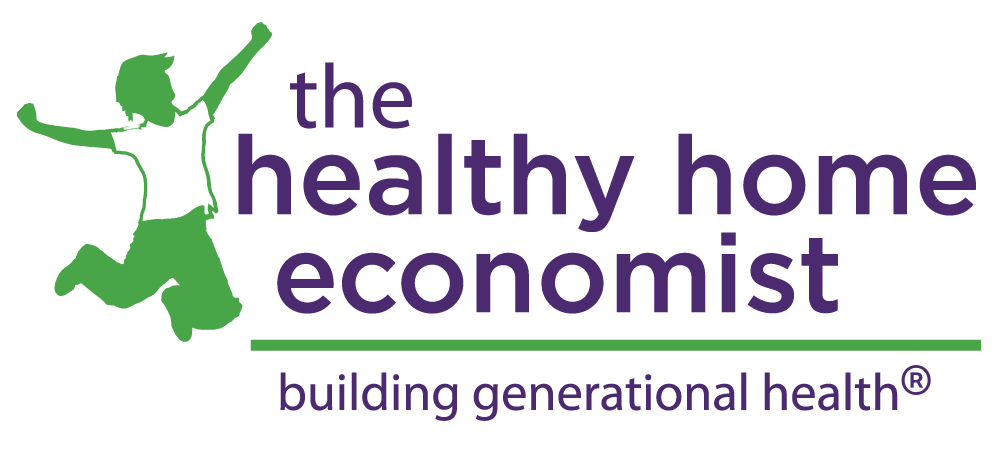 Why would the average consumer decide to switch to organic food? Typical reasons include food of higher quality that is hopefully more nutritious although conventional produce grown locally and picked at the peak of ripeness would no doubt rival the nutrition of organic produce picked early and shipped long distances. Consumers also generally assume that any food labeled as USDA Organic will not contain any dangerous ingredients or chemicals like carrageenan.
Why would the average consumer decide to switch to organic food? Typical reasons include food of higher quality that is hopefully more nutritious although conventional produce grown locally and picked at the peak of ripeness would no doubt rival the nutrition of organic produce picked early and shipped long distances. Consumers also generally assume that any food labeled as USDA Organic will not contain any dangerous ingredients or chemicals like carrageenan.
After all, buying certified organic food is still the only way to avoid genetically modified ingredients as GMOs are regularly slipped into healthfoods labeled as “natural” and even those containing organic ingredients but less than 70% organic overall.
Based on these assumptions, consumers would likely be surprised and even shocked to learn that a likely human carcinogen that triggers massive gastointestinal inflammation and symptoms in many people continues to be allowed by the National Organics Standards Board (NOSB) for inclusion on the list of ingredients permitted in certified organic food – food bearing the USDA Organic label!
This dangerous ingredient, carrageenan, which most consumers are unaware is lurking in so many of their beloved organic products, seems harmless enough at first glance.
Derived from seaweed, carrageenan is a highly processed food additive that has no nutritional function whatsoever.
What it does do is act as a fat replacer or stabilizer in certain types of dairy products, commercial dairy substitutes like soy milk, coconut milk, hemp seed milk, almond milk, and other processed foods.
As you can see, buying lowfat is not a good idea and not just for the fact that you are losing the valuable whole fats that satiate and steady the blood sugar. By opting for lowfat or alternative dairy products, consumers are choosing instead to consume a toxic additive that is a likely carcinogen!
Carrageenan a Potential Carcinogen
Even Dr. Andrew Weil has been telling people about carrageenan dangers since 2002.
Carrageenan is so toxic and inflaming to the human digestive system that this food additive is formally classified by the International Agency for Research on Cancer (part of the World Health Organization) as a potential human carcinogen.
Scientists first discovered that carrageenan causes gut inflammation as far back as the 1960’s. Inflammation is a very serious condition as it is a primary symptom in IBS, Crohn’s Disease, ulcerative colitis, and colon cancer as well as dozens of other diseases.
The hype from the carrageenan industry claims that “food grade” carrageenan is different from the low molecular weight, i.e., degraded carrageenan that is toxic to human cells.
This spin fails to mention that not a single sample of products containing carrageenan that were tested could be said to be free of the degraded form. Some samples contained as much as 25% low molecular weight carrageenan. This testing was conducted as part of a 2003 ruling by the European Commission’s Scientific Committee on Food which required that a maximum of 5% degraded carrageenan be contained in a processed food which includes the additive.
Another problem is that research available since the early 1980’s indicated that even food grade carrageenan is probably converted during the digestive process to the degraded, highly toxic form. More recent research sponsored by the National Institutes of Health (NIH), pinpointed the exact metabolic process by which carrageenan triggers inflammation. Shockingly, this biological event was found to mirror the way pathogenic bacteria such as salmonella wreak havoc in the gut.
The takeaway for consumers from this very discouraging NOSB ruling is to not take anything for granted just because a product is labeled USDA Organic. It still could be extremely damaging to your health!
Avoiding lowfat dairy and processed dairy substitutes is a very wise course of action. If you have a dairy allergy, learn to easily make healthy milk substitutes at home that are free of carrageenan dangers!
Be aware that most commercial pet food is loaded with carrageenan too. Check the labels to be sure your furry friends don’t suffer from its unhealthy effects as well.
Sarah, The Healthy Home Economist
Sources and More Information
The Cultivator, News from the Cornucopia Institute, Summer 2012








Hi Sarah, THANK YOU! Wow…now what do we do? I of course just ran to the fridge to look at our milk options in the fridge. So disappointing! Do you know of any brands out on the market that are not cow’s milk that DON’T have it? Thanks for this article…one more thing we need to adjust in our shopping/eating.
Angela
Yes, it is tough out there my friends. YOU MUST GET A COPY OF THE WAPF SHOPPING GUIDE!!!! The WAPF site is down for maintenance right now, but check back .. type in shopping guide in the search box and BUY ONE. They are only $1 and you will avoid all the brand shenanigans with carrageenan etc if you stick to the brands in that booklet.
westonaprice.org
Saw this ingredient in my Horizon organic heavy cream. It went straight in the trash. Serves me right for not checking in the store.
@Shannon OH NO!!!!
All the more reason to make your own yogurt with full fat milk
Well, as I mentioned on your blog, it is now in the full fat heavy whipping cream at a well-known “healthy” store. I can’t get raw cream and I live far from some health food stores where there is vat pasteurized cream. So there was one final place I could get standard pasteurized cream (instead of ultra-pasteurized) and now the ingredients are “cream and carrageenan.”
I have a very bad sensitivity to this. I couldn’t figure out what it was for the longest time because you usually don’t think about anything in almond milk being terrible. After a bout of gastritis, dairy really bothered me, so I substituted almond milk for a bit. My stomach was a mess. After I tolerated dairy again, my stomach problems went away for the most part (mostly because I stopped drinking almond milk with this in it). When I do have something with this in it, I get abdominal cramps. Recently, I was really upset to find some heavy cream I had been using now has this in it. I couldn’t figure out why I was getting sick after making something with it. In the past, it didn’t contain it and I never got the cramps. When I looked at the side of the bottle and it said “cream and carrageenan,” I was so angry! It was the only cream in my area I couldn’t find ultra-pasteurized and now I can’t use it! This stuff can really mess up an already sensitive GI tract for sure.
I meant that it was the only cream in my area I could find that wasn’t ultra-pasteurized. 🙁
Drink fresh, raw milk, from your local specialty market, or from a local farm that sells fresh raw milk. We all drink raw milk, and our kids are SO healthy. If you don’t have access to raw milk, check the WAPF website and see where the closest pasture raised dairy farm is to you. Raw goat milk is also very good for you!
Don’t be discouraged people. Staying healthy nowadays takes a savvy consumer. You can’t afford to throw up your hands or you are gonna be road kill. Get educated and make good, informed choices!
Probably not full fat. Stay AWAY from lowfat dairy and dairy substitutes!!
*sigh* life gets more confusing each day! Thank you for all your hard work, Sarah! Love your blog!
Is it in cheese, full fat cheese?